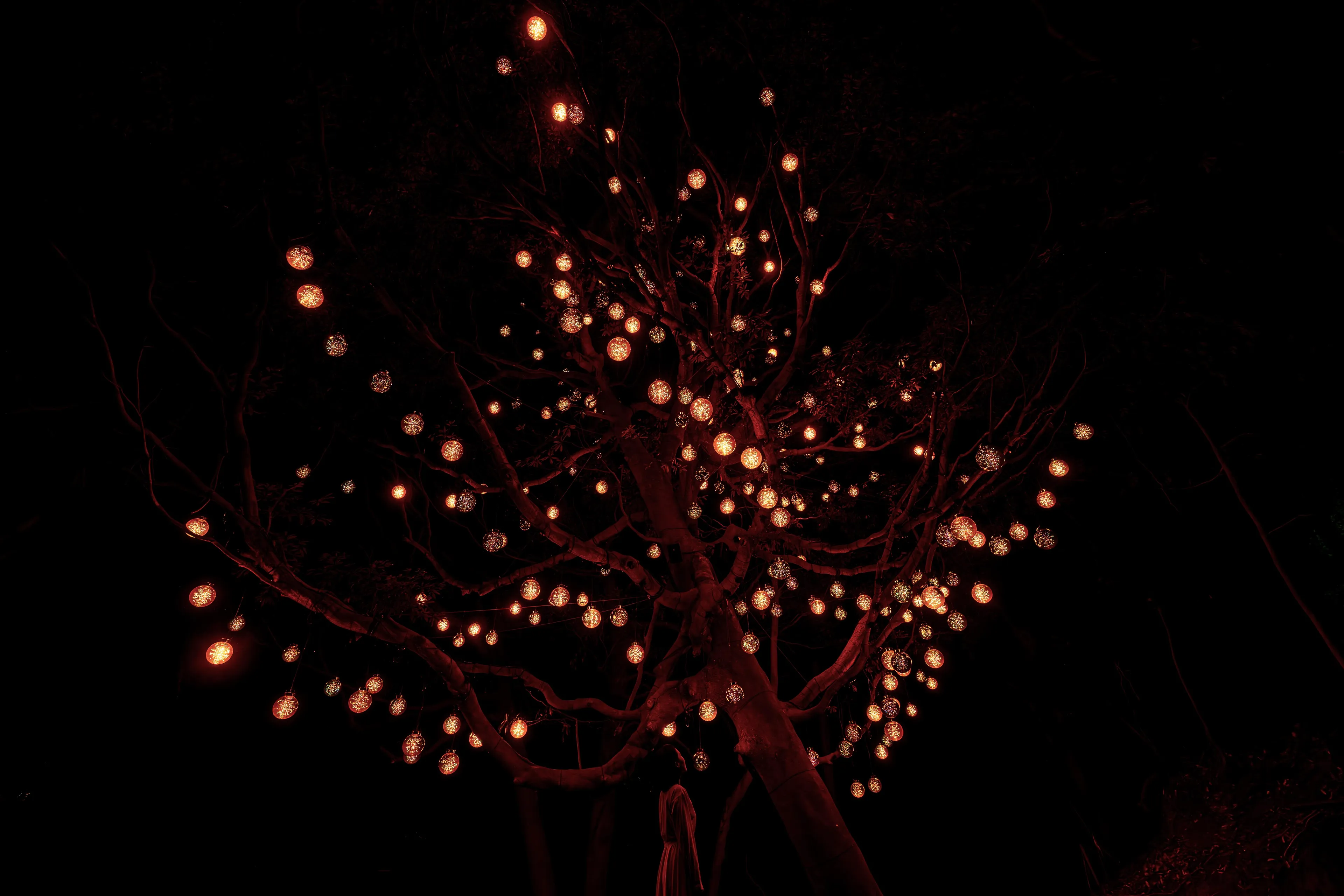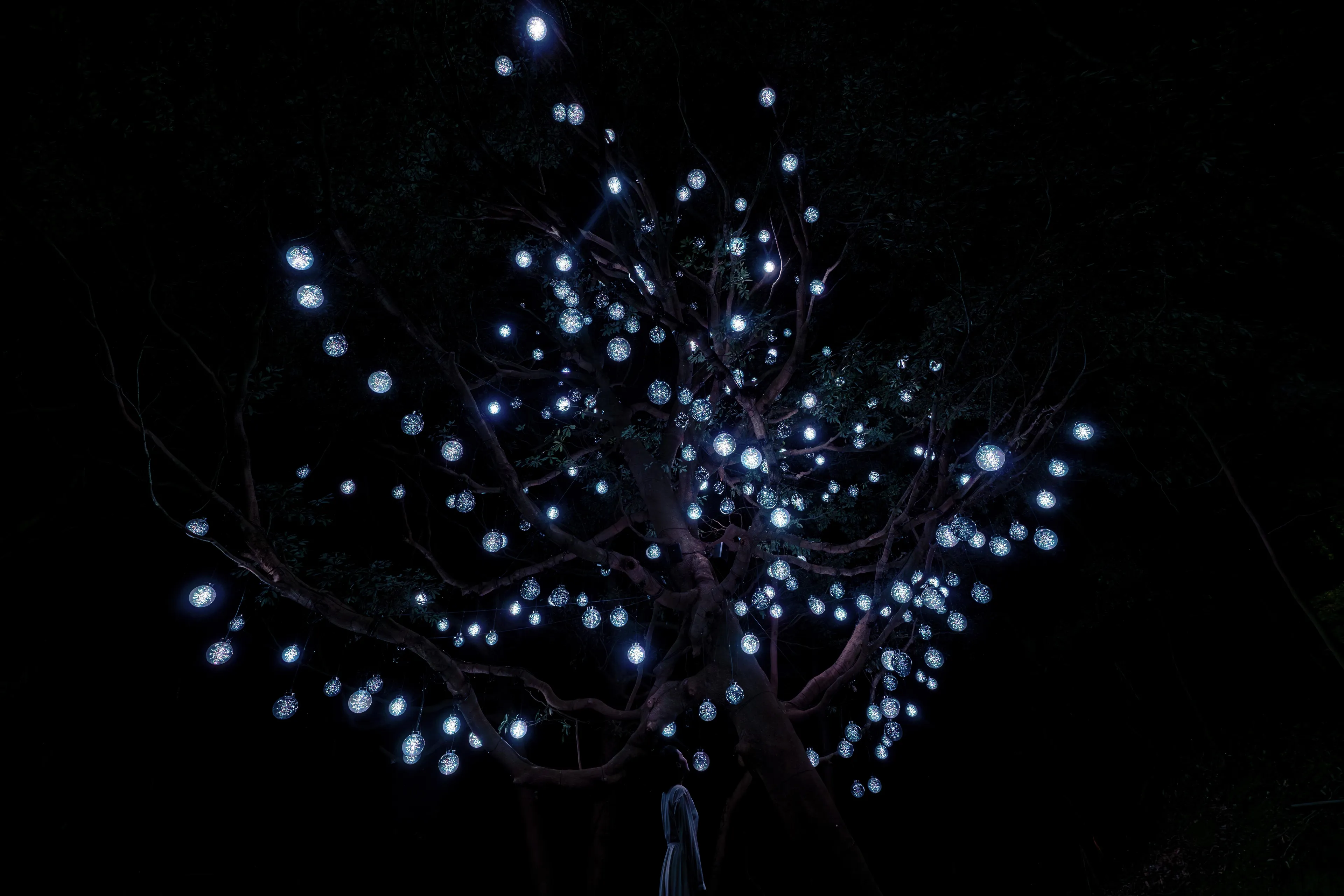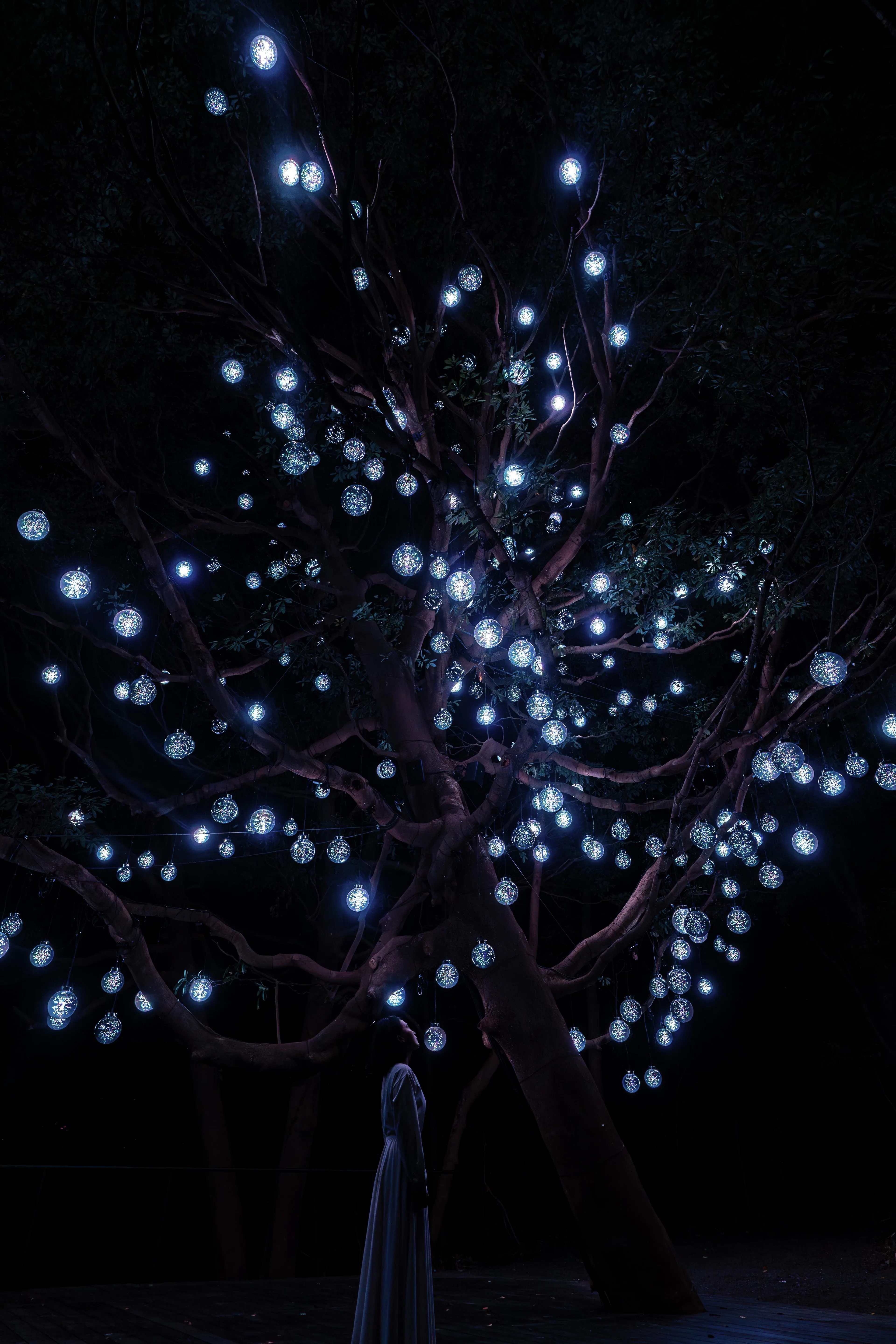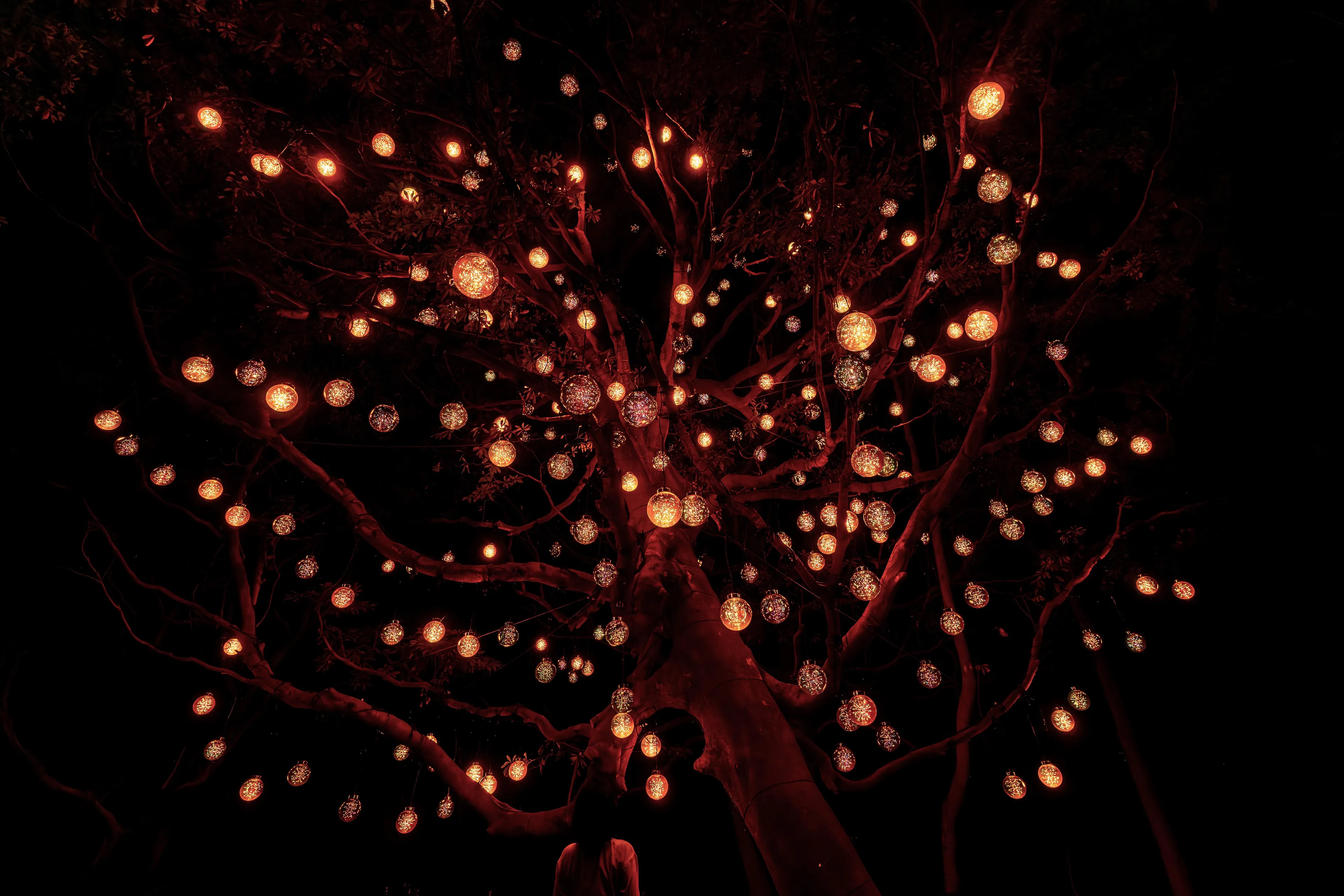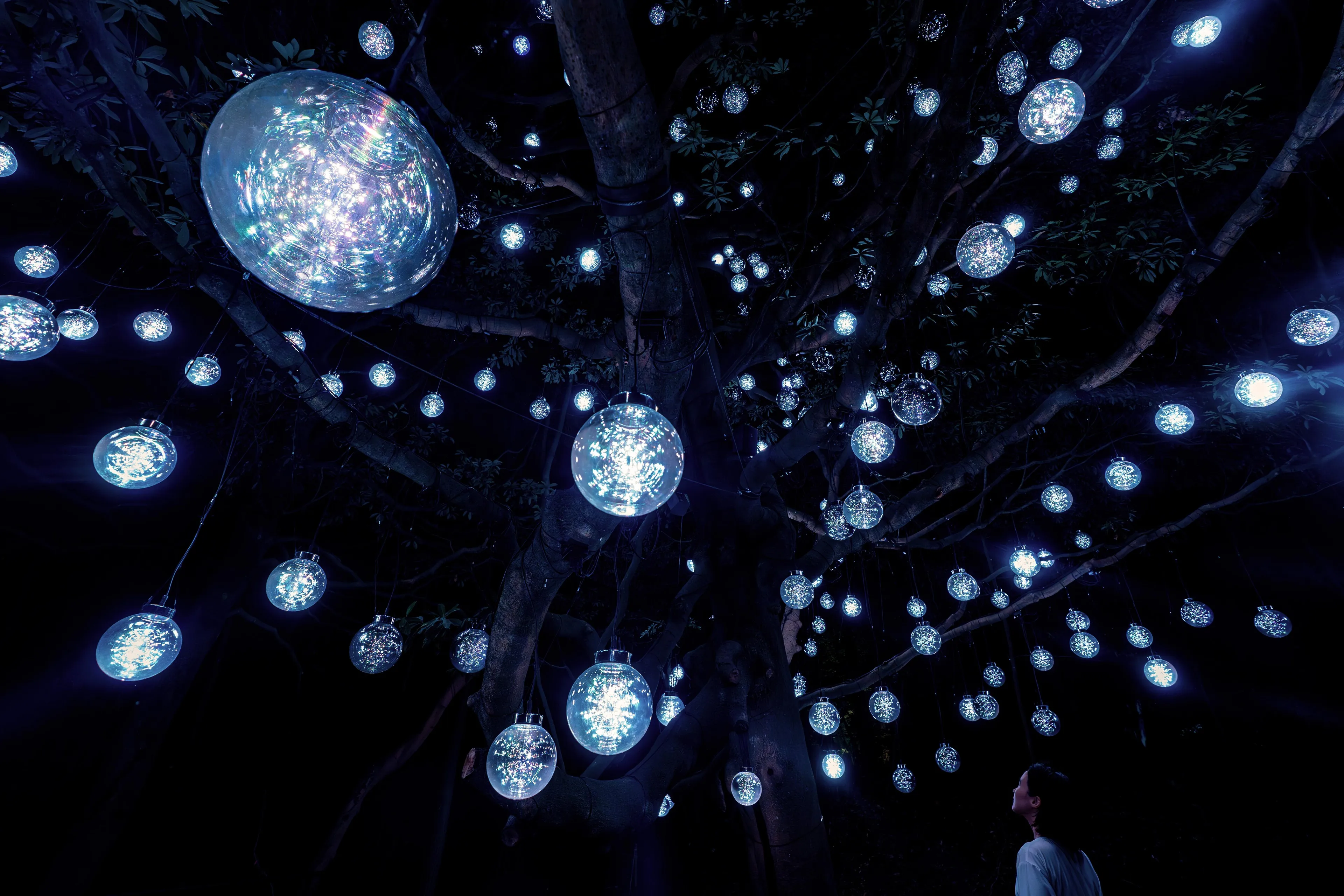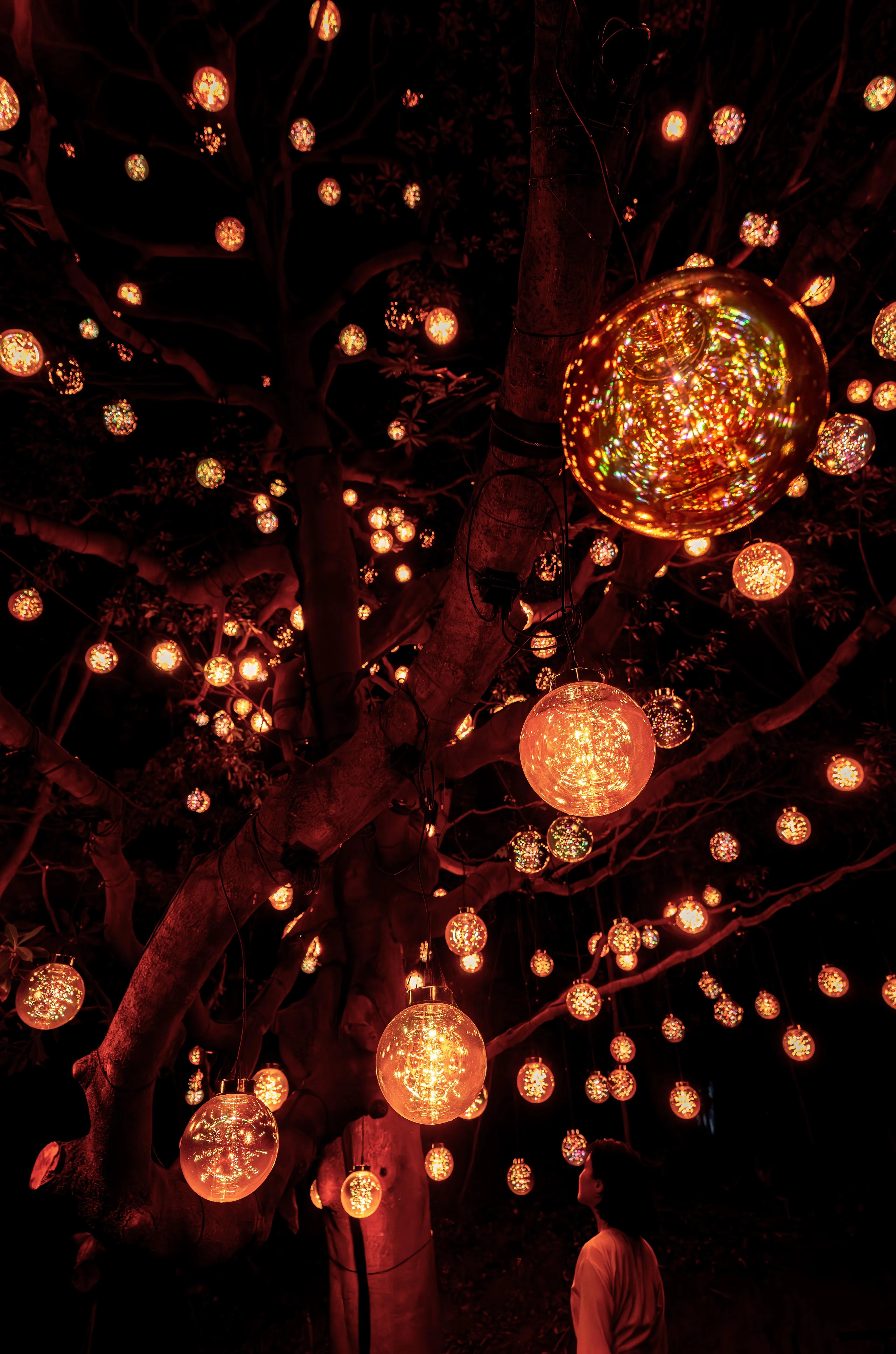Resonating Universe in the Tabunoki Tree

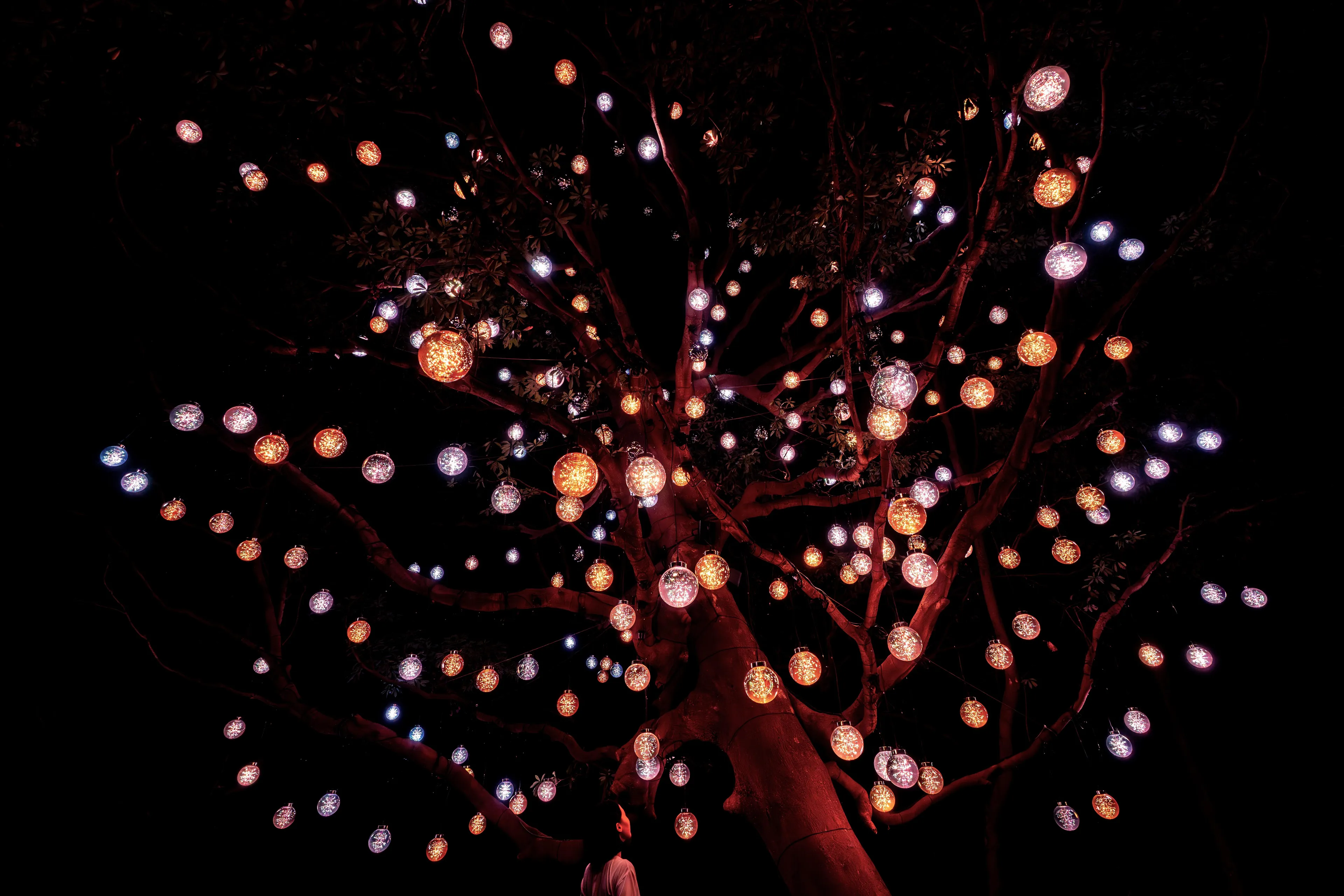
Resonating Universe in the Tabunoki Tree
According to various studies, forest trees are connected by a network of mycorrhizal fungi, recognizing each other and providing each other with nutrients. At the center of this coexistence and mutual support are large, long-lived trees. Forest ecologist Suzanne Simard calls such large trees "mother trees."
When a person stands near the Tabunoki Tree, the nearest sphere shines brightly and resonates a tone. The surrounding spheres respond one after another, and the light and tone continues to resonate out.
In the Man'yoshu, the oldest surviving collection of Japanese poetry compiled between the late 7th and late 8th centuries, there is a poem that is said to refer to the tsumama, or tabunoki tree. "Looking at the tsumama on the beach, it looks like a tree that has grown roots and has aged for a long long time. What a godly thing it is". Even 1200 years ago, people would have felt a sense of mysticism when they saw the roots of these giant trees that stretched long out into the entire forest.
